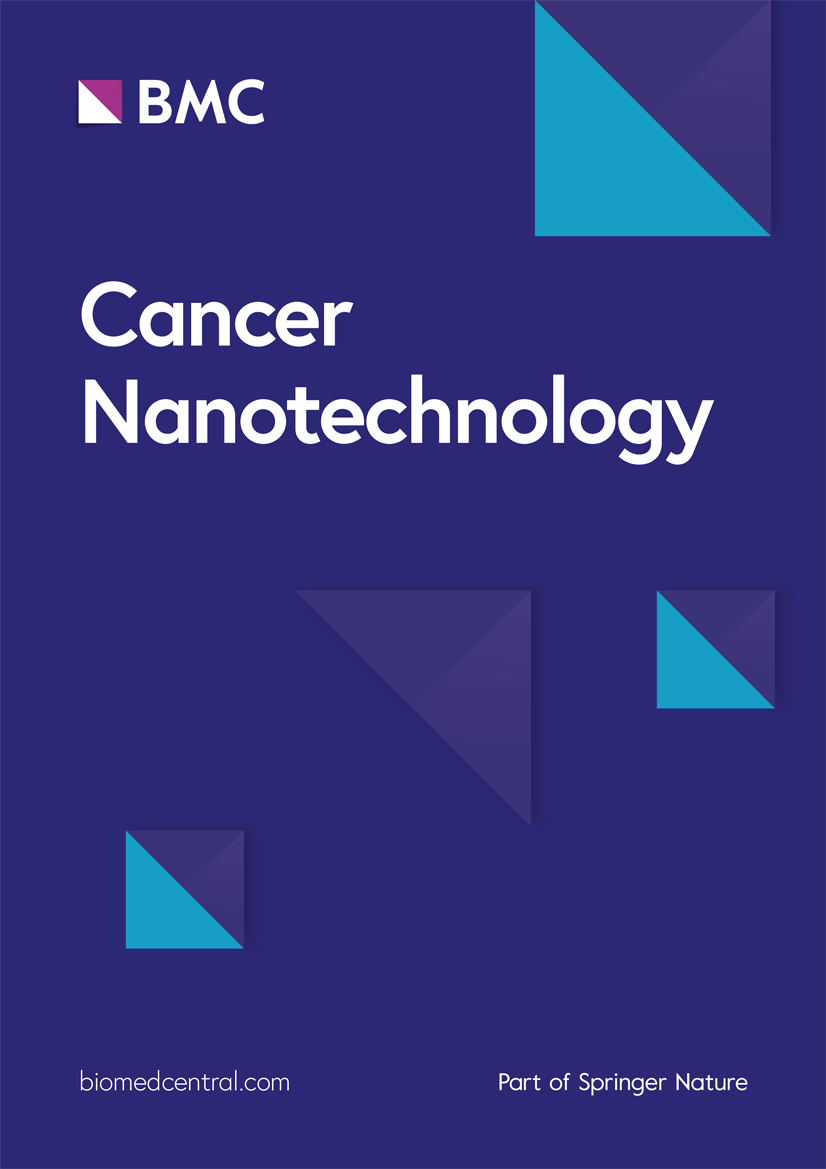Studies on the thermal sensitivity of lung cancer cells exposed to an alternating magnetic field and magnesium-doped maghemite nanoparticles
IF 4.8
2区 工程技术
Q2 NANOSCIENCE & NANOTECHNOLOGY
引用次数: 0
Abstract
Magnetic fluid hyperthermia (MFH) represents a promising therapeutic strategy in cancer utilizing the heating capabilities of magnetic nanoparticles when exposed to an alternating magnetic field (AMF). Because the efficacy and safety of MFH treatments depends on numerous intrinsic and extrinsic factors, therefore, the proper MFH setups should focus on thermal energy dosed into the cancer cells. In this study, we performed MFH experiments using human lung cancer A549 cells (in vitro) and NUDE Balb/c mice bearing human lung (A549) cancer (in vivo). In these two experimental models, the heat was induced by magnesium-doped iron(III) oxide nanoparticles coated with mPEG-silane (Mg0.1-γ-Fe2O3(mPEG-silane)0.5) when exposed to an AMF. We observed that the lung cancer cells treated with Mg0.1-γ-Fe2O3(mPEG-silane)0.5 (0.25 mg·mL−1) and magnetized for 30 min at 14.4 kA·m−1 yielded a satisfactory outcome in reducing the cell viability up to ca. 21% (in vitro). The activation energy calculated for this field strength was estimated for 349 kJ·mol−1. Both volumetric measurements and tumor mass assessments confirmed by magnetic resonance imaging (MRI) showed a superior thermal effect in mice bearing human lung cancer injected intratumorally with Mg0.1-γ-Fe2O3(mPEG-silane)0.5 nanoparticles (3 mg·mL−1) and subjected to an AMF (18.3 kA·m−1) for 30 min four times at weekly intervals. Research demonstrated that mice undergoing MFH exhibited a marked suppression of tumor growth (V = 169 ± 94 mm3; p < 0.05) in comparison to the control group of untreated mice. The CEM43 (cumulative number of equivalent minutes at 43 °C) value for these treatments were estimated for ca. 9.6 min with the specific absorption rate (SAR) level ranging from 100 to 150 W·g−1. The as-obtained results, both cytotoxic and those related to energy calculations and SAR, may contribute to the advancement of thermal therapies, concurrently indicating that the proposed magnetic fluid hyperthermia holds a great potential for further testing in the context of medical applications.暴露于交变磁场和掺镁氧化镁纳米粒子的肺癌细胞的热敏感性研究
磁流体热疗(MFH)是一种利用磁性纳米粒子在交变磁场(AMF)中的加热功能治疗癌症的有效方法。由于磁流体热疗的疗效和安全性取决于许多内在和外在因素,因此,正确的磁流体热疗设置应侧重于向癌细胞注入热能。在本研究中,我们使用人类肺癌 A549 细胞(体外)和携带人类肺癌(A549)的 NUDE Balb/c 小鼠(体内)进行了 MFH 实验。在这两个实验模型中,镁掺杂的氧化铁(III)纳米粒子包覆有 mPEG-硅烷(Mg0.1-γ-Fe2O3(mPEG-硅烷)0.5),当暴露于 AMF 时会诱导发热。我们观察到,用 Mg0.1-γ-Fe2O3(mPEG-silane)0.5(0.25 mg-mL-1)处理肺癌细胞,并在 14.4 kA-m-1 下磁化 30 分钟,结果令人满意,细胞活力降低了约 21%(体外)。该磁场强度计算出的活化能估计为 349 kJ-mol-1。通过磁共振成像(MRI)确认的体积测量和肿瘤质量评估结果显示,在瘤内注射 Mg0.1-γ-Fe2O3(mPEG-silane)0.5 纳米粒子(3 mg-mL-1)并接受 AMF(18.3 kA-m-1)30 分钟(每周四次)的人类肺癌小鼠身上,热效应非常显著。研究表明,与未接受治疗的对照组小鼠相比,接受 MFH 治疗的小鼠明显抑制了肿瘤的生长(V = 169 ± 94 mm3;p < 0.05)。这些治疗的 CEM43(43 °C 下的累积等效分钟数)值约为 9.6 分钟。9.6 分钟,比吸收率 (SAR) 为 100 至 150 W-g-1。目前获得的结果(包括细胞毒性以及与能量计算和 SAR 相关的结果)可能有助于热疗法的发展,同时表明拟议的磁流体热疗在医疗应用方面具有进一步测试的巨大潜力。
本文章由计算机程序翻译,如有差异,请以英文原文为准。
求助全文
约1分钟内获得全文
求助全文
来源期刊

Cancer Nanotechnology
Pharmacology, Toxicology and Pharmaceutics-Pharmaceutical Science
CiteScore
5.20
自引率
1.80%
发文量
37
审稿时长
15 weeks
期刊介绍:
Aim:
Recognizing cancer as a group of diseases caused by nanostructural problems (i.e. with DNA) and also that there are unique benefits to approaches inherently involving nanoscale structures and processes to treat the disease, the journal Cancer Nanotechnology aims to disseminate cutting edge research; to promote emerging trends in the use of nanostructures and the induction of nanoscale processes for the prevention, diagnosis, treatment of cancer; and to cover related ancillary areas.
Scope:
Articles describing original research in the use of nanostructures and the induction of nanoscale processes for the prevention, diagnosis and treatment of cancer (open submission process). Review, editorial and tutorial articles picking up on subthemes of emerging importance where nanostructures and the induction of nanoscale processes are used for the prevention, diagnosis and treatment of cancer.
 求助内容:
求助内容: 应助结果提醒方式:
应助结果提醒方式:


